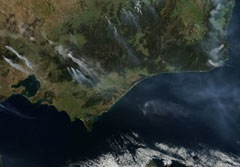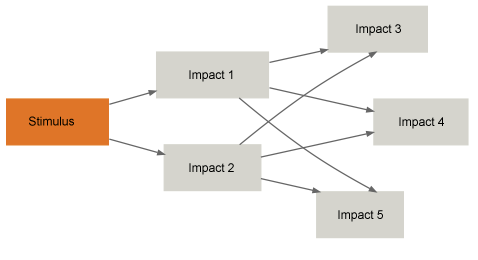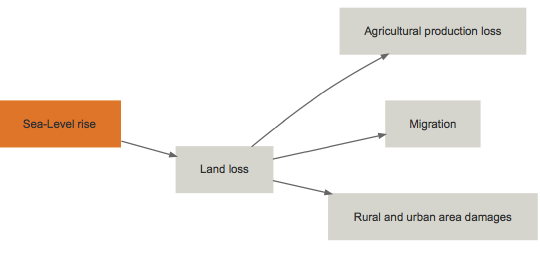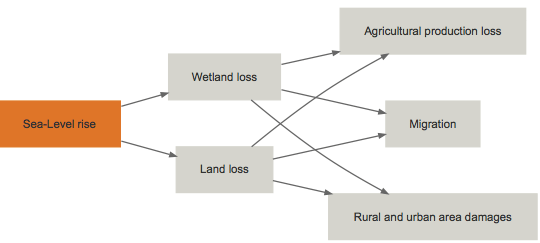Impact Chains
|
Currently impact chains for the following stimuli are addressed within ci:grasp: In addition, specific impact chains for tropical coastal areas are available: |
Climate change has various impacts on the diverse habitats of our planet. Several of these impacts can be felt already today, specifically in developing and emerging countries. Some of these impacts however, may not easily be associated with climate change. ci:grasp uses the concept of impact chains in order to structure climate-related information on impacts. These impact chains provides the means to understand the impacts climate change may trigger and how these propagate through a system of interest: A climate impact chain (in short: impact chain) is a general representation of how a given climate stimulus propagates through a system of interest via the direct and indirect impacts it entails. The representation of impact chains in ci:grasp is broad and general. When taking local context into account an impact chain may become more complex, as it becomes locally specific, i.e. impacts do not necessarily occur on more regional scales, or in other locations. A climate stimulus marks the beginning of an impact chain and gives the impact chain its name. Basically, an impact chain can be depicted like this:
The leftmost box thus depicts the climate stimulus. All boxes to its right depict impacts. Each arrow expresses a possibly leads to relation. An item in a box possibly leads to an item in another box a connecting arrow points to. A climate stimulus can lead to one or more impacts. An impact can possibly lead to one or more impacts, too. A general impact chain for sea-level rise may look like this:
One of the climate stimuli depicted in ci:grasp is sea-level rise. Which direct and indirect impacts may sea-level rise possibly entail? The impact chain above depicts that land affected by sea-level rise may not only possibly lead to a loss of land for residential space, but also may affect agricultural production, which may in turn indirectly lead to migration in case food security would be at risk. Since the main goal of ci:grasp is to provide an overview over the most common direct and indirect impacts of climate change via a clear structure, it will become necessary to refine impact chains for local context. If additional local knowledge became available an impact chain can account for this by addition of a new box depicting the new knowledge and the proper arrow(s) connecting this box to the impact chain. For example, we may have found out that wetland loss is an impact of sea-level rise. The modified impact chain would then look like this:
|



